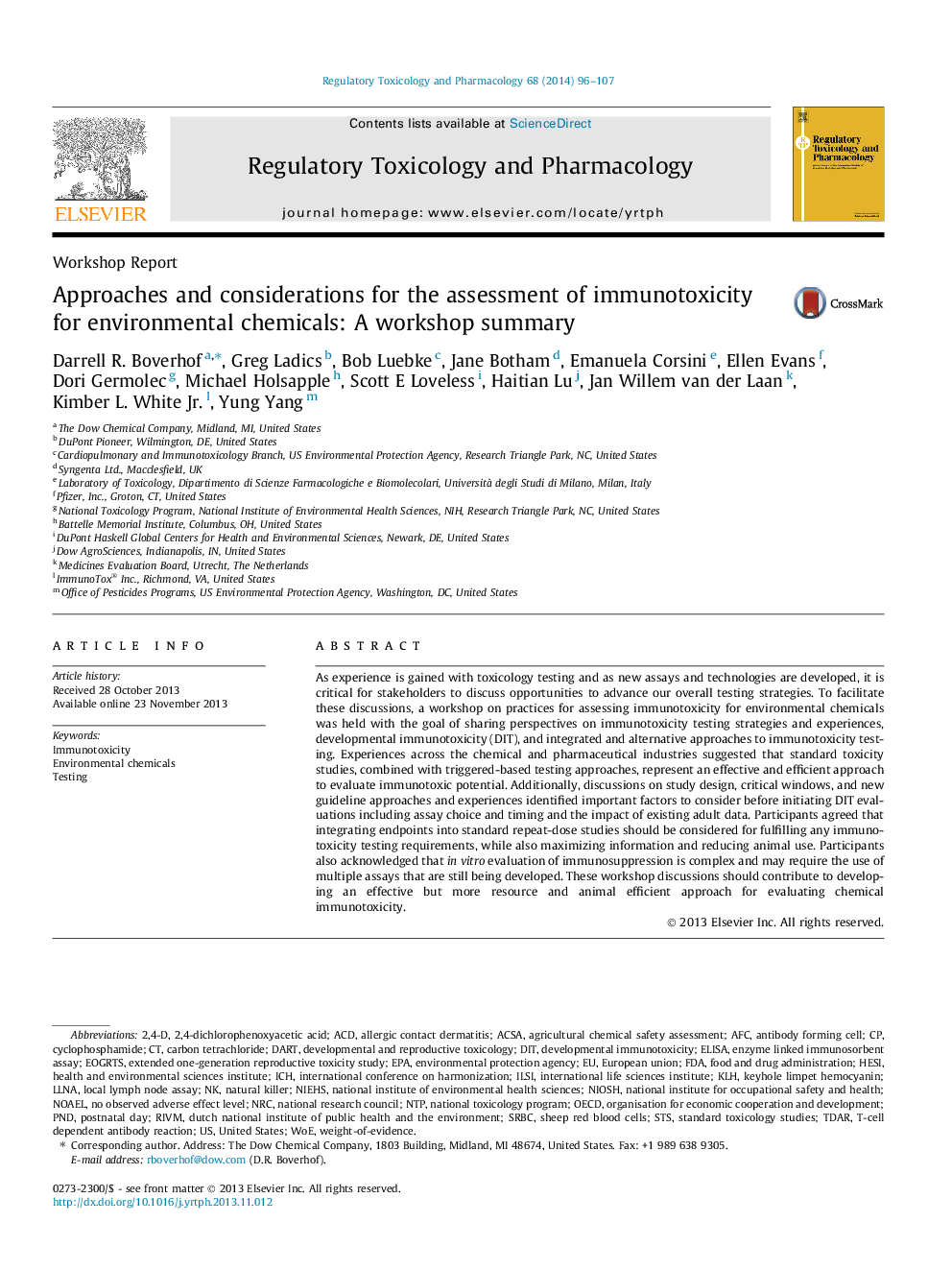| Article ID | Journal | Published Year | Pages | File Type |
|---|---|---|---|---|
| 5857372 | Regulatory Toxicology and Pharmacology | 2014 | 12 Pages |
Abstract
As experience is gained with toxicology testing and as new assays and technologies are developed, it is critical for stakeholders to discuss opportunities to advance our overall testing strategies. To facilitate these discussions, a workshop on practices for assessing immunotoxicity for environmental chemicals was held with the goal of sharing perspectives on immunotoxicity testing strategies and experiences, developmental immunotoxicity (DIT), and integrated and alternative approaches to immunotoxicity testing. Experiences across the chemical and pharmaceutical industries suggested that standard toxicity studies, combined with triggered-based testing approaches, represent an effective and efficient approach to evaluate immunotoxic potential. Additionally, discussions on study design, critical windows, and new guideline approaches and experiences identified important factors to consider before initiating DIT evaluations including assay choice and timing and the impact of existing adult data. Participants agreed that integrating endpoints into standard repeat-dose studies should be considered for fulfilling any immunotoxicity testing requirements, while also maximizing information and reducing animal use. Participants also acknowledged that in vitro evaluation of immunosuppression is complex and may require the use of multiple assays that are still being developed. These workshop discussions should contribute to developing an effective but more resource and animal efficient approach for evaluating chemical immunotoxicity.
Keywords
NOAELFDARIVMSRBCILSIACDOECDACSADArTWOEEPAAFCKLHSTSPNDNIEHSNRCEOGRTSNTPLLNATDARExtended One-Generation Reproductive Toxicity Studynatural killer2,4-D2,4-dichlorophenoxyacetic acidTestingLocal lymph node assayAntibody forming cellenzyme linked immunosorbent assayEnvironmental Protection AgencyEuropean UnionUnited StatesDITNational Toxicology ProgramELISAACD, Allergic contact dermatitispostnatal dayFood and Drug AdministrationOrganisation for Economic Cooperation and DevelopmentImmunotoxicityDevelopmental immunotoxicityCyclophosphamideNational Research CouncilICHEnvironmental chemicalsInternational Life Sciences InstituteHealth and Environmental Sciences InstituteNational Institute for Occupational Safety and HealthNational Institute of Environmental Health SciencesNIOSHHESINo observed adverse effect levelWeight-of-evidenceCarbon tetrachloridekeyhole limpet hemocyaninInternational Conference on Harmonizationsheep red blood cells
Related Topics
Life Sciences
Environmental Science
Health, Toxicology and Mutagenesis
Authors
Darrell R. Boverhof, Greg Ladics, Bob Luebke, Jane Botham, Emanuela Corsini, Ellen Evans, Dori Germolec, Michael Holsapple, Scott E Loveless, Haitian Lu, Jan Willem van der Laan, Kimber L. Jr., Yung Yang,
